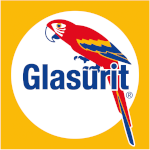Oxford Bus Museum - Climb Aboard!
_xl.JPG)
Published: 02/06/2021
We have got a real treat for those of you who visit us during half term at the end of May and beginning of June. You’ll be able to step on board on Wednesday 2 June and Sunday 6 June for a free ride at 12.15pm and 2.45pm. We’ll have a strict limit on the number of passengers- and all the windows will be open so wrap up well!
On Sunday 13 June we are arranging a special event featuring country buses, which were used on rural routes in the past. We hope to have visiting buses and coaches, some of which may be used on the free bus rides at 12.15pm and 2.45pm. The first motor bus service between Oxford an Abingdon started in May 1914 just before the First World War started. In those days, the buses had solid rubber tyres. Although pneumatic tyres had been invented by JP Dunlop as early as 1888, the technology was still not available to make the pneumatic tyre walls strong enough to take the weight of a bus and its passengers. The result was that buses were hard on the roads. By November 1915, the Abingdon Rural District Council was claiming compensation from the bus company for damage allegedly caused by motor buses to its roads. The claim was not settled until the early 1920s.
After the war ended the Oxford bus company looked to increase its profitability. Fares within Oxford were controlled set by the Oxford Tramways Act 1914. However, fares outside the City were uncontrolled. During 1918, the company was running country routes to Abingdon, Wantage and Wallingford, which provided a fifth of the company’s total mileage, took just a quarter of the total receipts– and the lion’s share, a hefty 40%, of the company’s profits.
So successful were its rural routes, the company decided to expand its country operations with new routes to Chipping Norton, Faringdon and Burford via Witney Climb aboard for a half term rural ride A country bus in 1920s approaching Eynsham Toll Bridge to take advantage of the unrestricted fares. To operate routes in Berkshire, the company had to pay an annual licence fee to the County Council of 2d (approx. 4p) per mile, but for routes in Oxfordshire, the county council charged only 1d a mile. The introduction of the Vehicle Excise Licence in 1921 superseded this arrangement. Many of the buses in our collection ran on country routes. Single deck buses were usually used on country routes where passenger numbers were low but double deckers used if more capacity were needed. NJO 703 was acquired in 1949 by the Oxford bus company for private hire and excursion duties, but when not used for such duties was used on country routes. It is pictured after acquisition for preservation at an event showing country service 26 on its blind.










